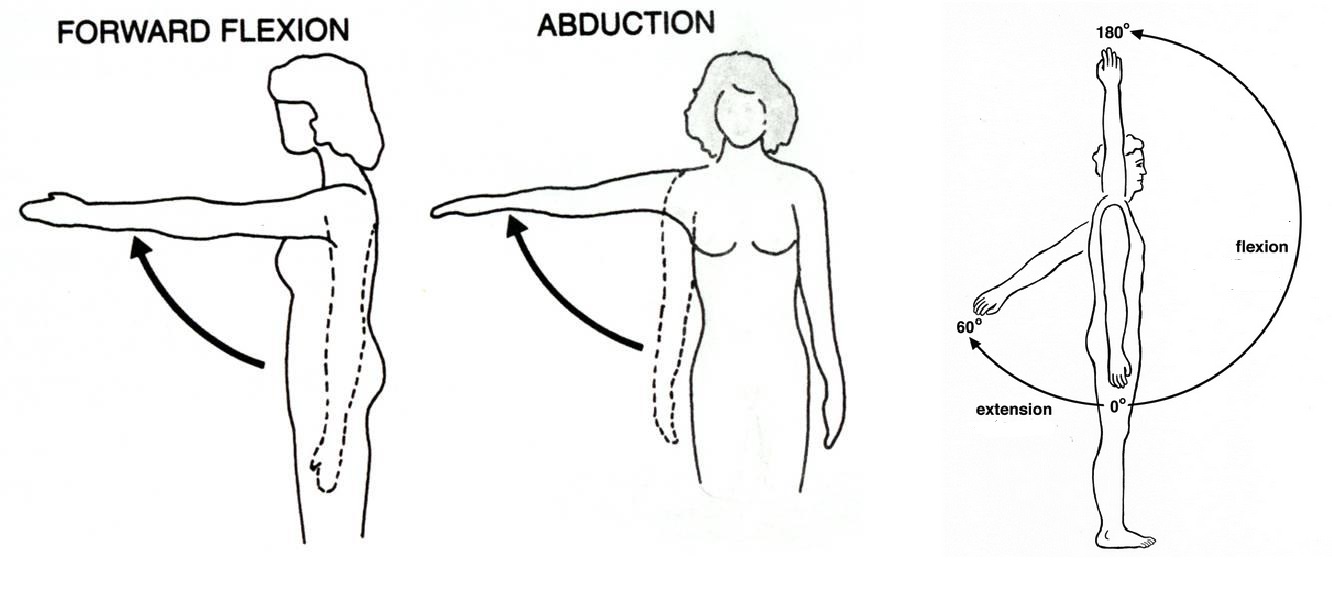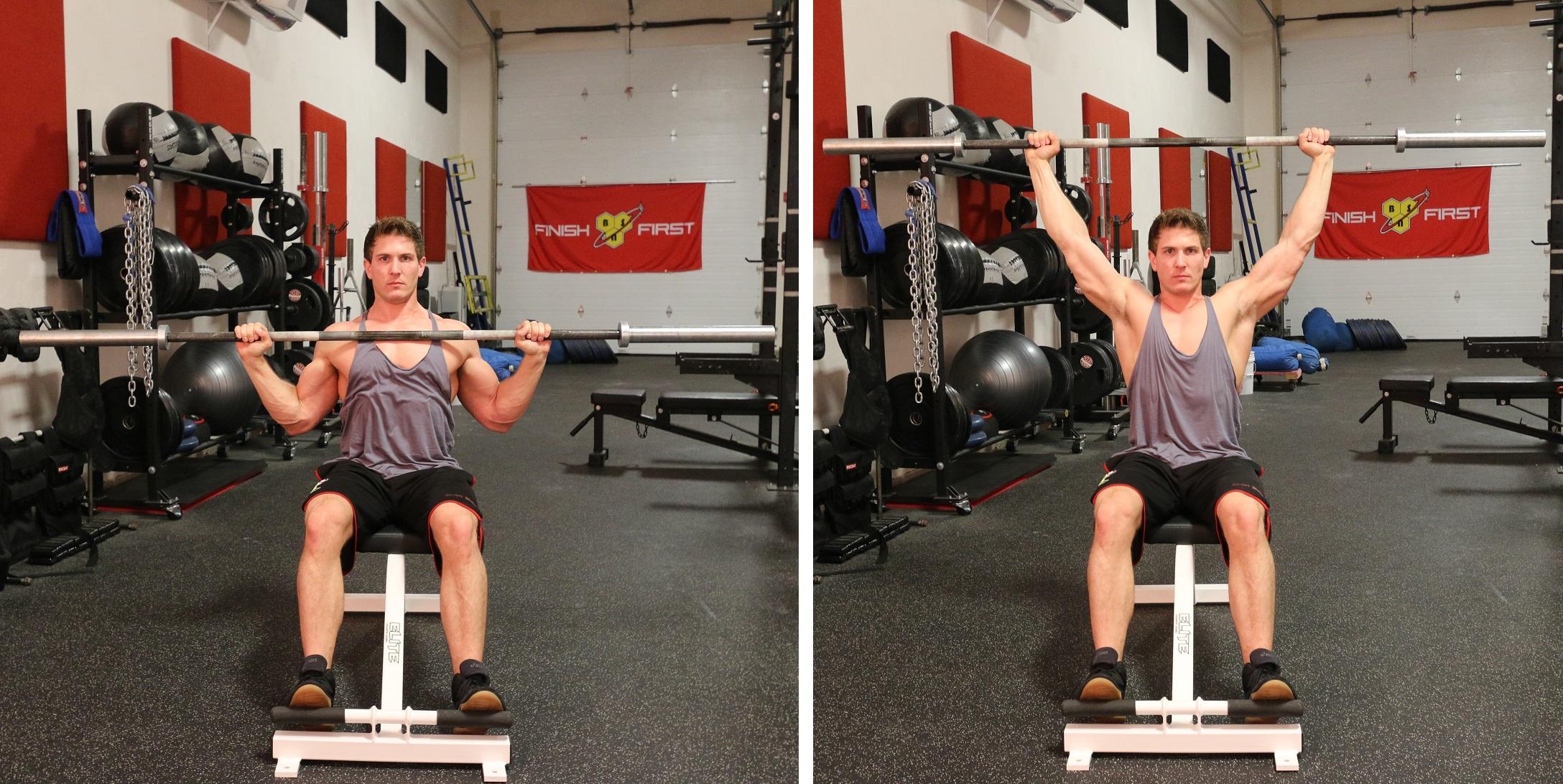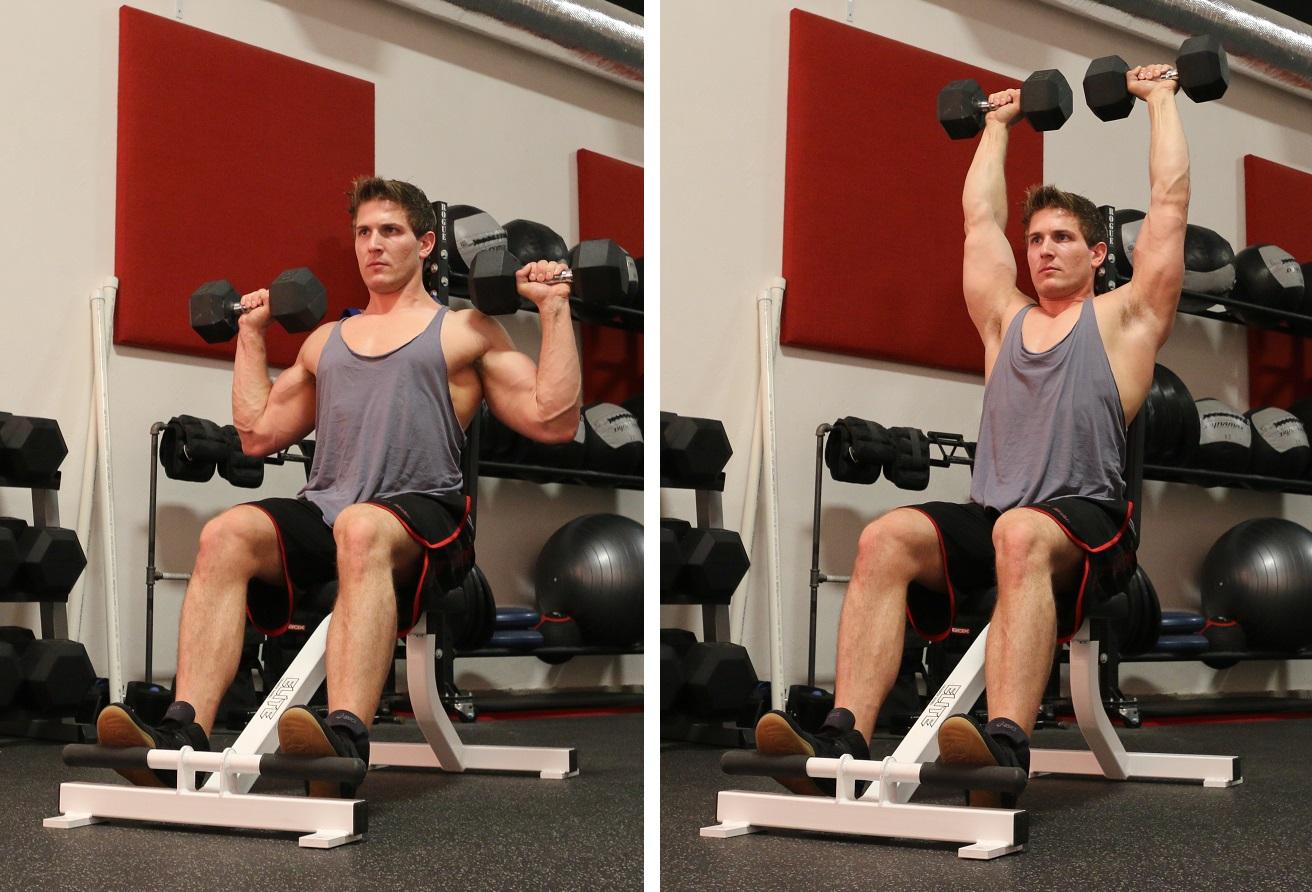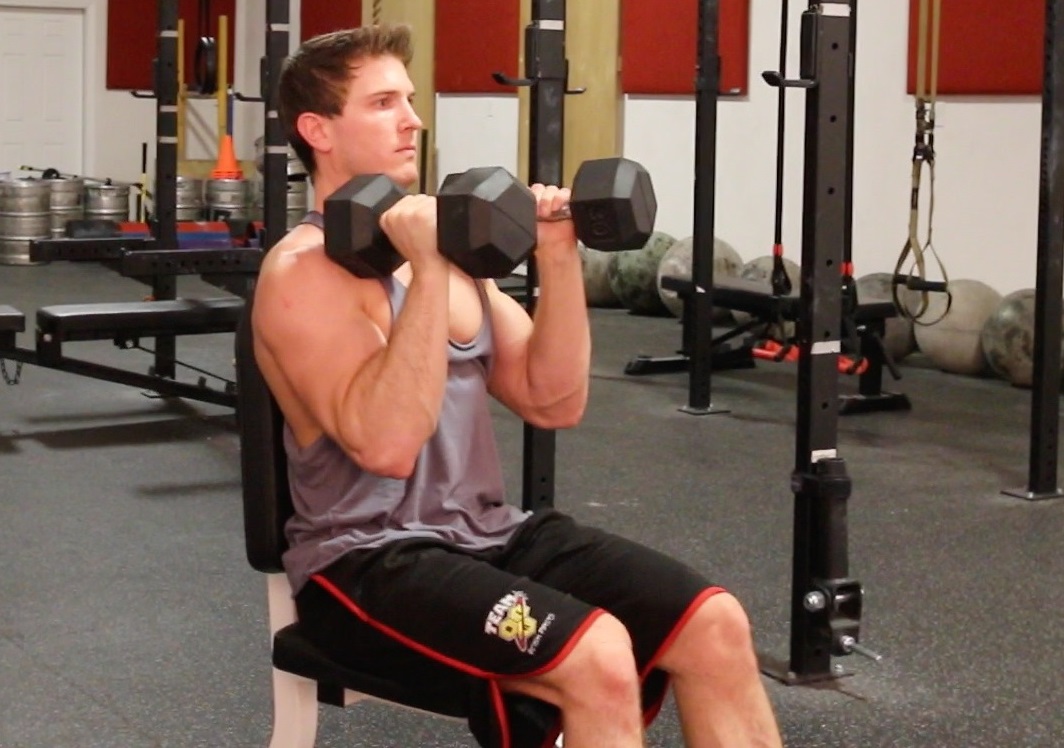Dumbbell Shoulder Press Vs Barbell Shoulder Press
Which Builds Bigger Shoulders Faster?
Welcome to another instalment in my VERSUS SERIES! Last time we compared the Incline Barbell Bench Press VS. the Reverse-Grip Bench Press. If you didn’t see the article, you can check it out HERE. Today we are going to be comparing the BARBELL SHOULDER PRESS VS the DUMBBELL SHOULDER PRESS.
To begin this comparison, let’s first discuss the muscles that are primarily involved in both movements which are the anterior, middle & posterior deltoids. These muscles are responsible for shoulder abduction, shoulder flexion and shoulder extension. You will also be activating your triceps brachii and biceps brachii during each movement as well. Remember that your triceps assist in the pressing motion during the movement and are active throughout the full range of motion. For your biceps brachii, especially the short head, these muscles will act more like dynamic stabilizers throughout the movement.

Some other muscles involved that will act as stabilizers during the movement are your rotator cuffs, traps, lats, teres major and minor and rhomboids. You will also be activating all the muscles in your core, but how much activation you will have will change when doing the exercise standing versus seated. With that being said, in this article we are going to primarily focus on the seated version of both exercises, but I will still briefly mention some of the differences in muscle activation in the standing versions of each exercise at the end of the article.
Seated Barbell Shoulder Press
For this exercise, all you need is a bench and a rack (if you have one, you can also use a seat that is already in an upright position with back support). To get started, you’re going to sit down and keep your feet flat on the ground. If the bench you’re using has an option where you can put your feet on the pegs, I’d recommend doing that because you want to make sure that your butt and your back stay against the back pad throughout the entire range of motion. Anything you can do to ensure that you don’t slide forward throughout the movement is going to help you out. What happens when you start to slide forward too much is that you start to turn the movement into an incline barbell bench press. If you start in an upright position, but slowly slide forward to the point where you’re arching your back excessively and pushing the weight up, there’s no support for your lower back and you can severely injure yourself.
The reason why most people will slide forward is because they want to lift heavier weight, so just drop the ego, use the correct amount of weight, and you won’t risk injuring yourself. With all that being said, you do want to have a SLIGHT arch in your back, just make sure that your glutes are touching the bench and your shoulders are touching the bench. Once in place, you’re going to grab the barbell about 2 inches outside of shoulder width. If you grab too close as you do the movement, you’re going to be recruiting a lot more triceps into the exercise, and you don’t want to do that. Once your grip is correct, you’re going to unrack the weight and then once you have the bar over your head, you’re going to have to turn your elbows forward slightly. The reason is because if you were to keep the barbell where it was previously and bring it straight down, the bar will hit your head. By turning your elbows forward slightly, you can bring the barbell down to the top of your chest and yes, you’re doing full range of motion. After touching the top of your chest, you’re going to press the barbell back up, and lockout back at the top of the movement with the barbell OVER your head, not out in front of it.

Another thing you can do to keep this movement nice and fluid is you can keep your head up a little bit. You can tilt it up slightly and that will help make sure that as you bring the barbell down it doesn’t hit you in the face and when you press it back up, it won’t hit you in the chin. Keep these things in mind when doing this exercise, and you’ll have proper form!
Seated Dumbbell Shoulder Press
Again, this movement can be done on a regular bench, or a bench with back support. A bench with a really high back can give you more shoulder support, which can be a good thing if you need it. To get started, place both dumbbells on your thighs. Then what you’re going to do is push off your toes to bring the dumbbells up to your shoulders. Once in place, you can choose to keep your feet flat, or again if you have the option you can put them on pegs to help keep you in the seat as best as possible. Remember you want to keep your butt from sliding forward and by pushing into pegs you can keep your butt on the pad and make sure you have a slight arch in your back with your upper back / shoulders against the back pad as well.
Once in place, you’re going to sit with your palms facing forward and the dumbbells are going to be down by your shoulders. You’re then going to push straight up to the top of the movement, but you’re not going to let the dumbbells touch each other – don’t bounce them. Just push straight up, get a full extension and then come back down and repeat for reps. You’re going to notice with this movement that because you’re not using a barbell, you can press the dumbbells up over your head and bring them down over your head as well, so there’s no reason to turn your elbows in. You can keep them nice and wide and out to the side as you complete all your repetitions with full range of motion.

Which Is Better For Building Bigger Shoulders?
Each exercise has its pros and cons and it is going to be up to you to determine which exercise better fits with your goals. As you just saw with the barbell shoulder press in order to lower it to the top of your chest, you have to bring it down IN FRONT of your body. What happens when you do this is that you’re transferring more of the load to the anterior and middle deltoids as well as the upper chest and recruiting less muscle fibers in the posterior deltoids. Now this is not necessarily a bad thing because you have other exercises like the dumbbell bent-over fly that you can use to specifically target your rear delts in your workouts. Also, if you goal is to lift HEAVIER to build overall mass and strength in your upper body you will certainly be able to lift more using the barbell version of this movement. Another thing to keep in mind is that the strength you gain from this movement will transfer over to help improve other lifts such as your barbell bench press.
But if your goal is more aesthetics and you want to make sure that you are targeting all three heads of your deltoids as best as you can for that “round shoulder” look, then you would want to stick with the dumbbell shoulder press. Remember when bodybuilding, which means your goal is purely building muscle, you should always be utilizing exercises that are going to help you breakdown the most muscle fibers for more growth. Yes, you will be able to lift more with the barbell version, but if your posterior deltoids are lacking in development then you need to make sure you are targeting them every chance you get. Also (and this is very, VERY important) MORE WEIGHT doesn’t always mean MORE GROWTH. The reason why you can lift more with the barbell is because you are putting your body at a mechanical advantage over the dumbbell version. Just because you are using a little less weight with dumbbells doesn’t mean you’re still are not applying all your strength to complete your reps.
Now let’s look at some other advantages and disadvantages to each exercise. The barbell shoulder press is also great for helping to build muscle and strength in other areas such as your traps and triceps. On the other hand, the dumbbell shoulder press, because each arm is moving independently of each other, will force you to use more supportive muscles like the ones in your rotator cuffs and you will feel a bit more biceps engagement for stability throughout the movement as well.
Comparing Deltoid Muscle Activation
There was a Norwegian Study (1) that compared the barbell overhead press to the dumbbell overhead press to see just how different the extent of muscle activation was for all three deltoids between the two exercises using electromyographic (EMG) activity. They actually compared seated versus standing for each exercise to see what the best option was and I want to share some of that information with you.
For anterior deltoid recruitment, the seated dumbbell press had 11% greater muscle activation then the seated barbell press.
For middle deltoid recruitment, the standing dumbbell press was 7% greater than the standing barbell press. They didn’t do a comparison for the seated versions, but after looking at the data it would seem that the seated dumbbell press would still recruit more middle deltoid.
For the posterior deltoids they didn’t compare dumbbell versus barbell but instead they compared seated versus standing for both exercises. What they found is that you will recruit about 25% MORE posterior deltoids if you perform the exercise STANDING versus seated whether using a barbell or dumbbells. However, keep in mind that you will still be recruiting MORE posterior deltoids OVERALL when using dumbbells. So what you should take away from this is that if you want to REALLY maximize posterior deltoid development, you should do the dumbbell shoulder press STANDING.
Which Variation Is Best For You?
If your main goal is overall upper body strength and mass and improving other lifts like your barbell bench press, then you should be incorporating the BARBELL SHOULDER PRESS into your routine. If you’re looking to round out the entire deltoid area for bodybuilding or aesthetics purposes, then you will want to use the DUMBBELL SHOULDER PRESS.
However, keep in mind that you could also simply rotate these exercises in and out of your routine from week to week. On heavier or strength days you should use the barbell press and for high volume days use the dumbbell press.
Some other things to keep in mind are that if you are prone to, or have a shoulder injury, you might want to stay away from the barbell version of the movement. You run a much higher risk of shoulder impingement because your arms are essentially stuck in one place throughout the entire movement. Because you can lift more with this version, the added weight will be much more taxing on your shoulders. In fact, because you are using less weight with the dumbbell press and your arms move independently of each other when performing the movement, you will be forced to use LESS weight which will lessen your chances of an injury.
But I know that because 99% of you will be able to lift more weight with the barbell press that you will automatically think it’s still better for building muscle. That just isn’t true and is just your ego taking over. Don’t confuse more weight with “better”. Utilize the information in this video to understand the pros and cons of each exercise and use that information to help you reach your goals.
Conclusion
Here’s a quick bonus tip! If you currently do have shoulder pain when performing either of these movements you can try to perform the dumbbell press with a neutral grip. This variation will activate a bit more triceps, but you should still be able to perform it pain free and it certainly beats your other option which is not being able to do either exercise at all.

References:
1. Saeterbakken, A.H. and M.S. Fimland, "Effects of Body Position and Loading Modality on Muscle Activity and Strength in Shoulder Presses," Journal of Strength and Conditioning Research," 27 (7): 1824–1831, 2013








